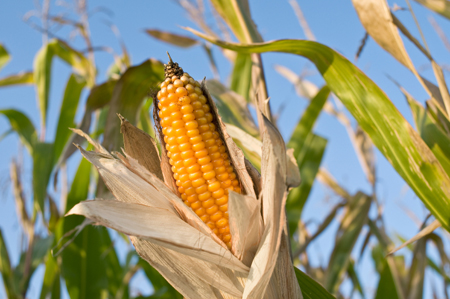 (Agriculture.com) – Brazil’s insatiable appetite for growing more soybeans is fading, while Argentina’s farmers plan to go all in on corn production in 2016/2017.
(Agriculture.com) – Brazil’s insatiable appetite for growing more soybeans is fading, while Argentina’s farmers plan to go all in on corn production in 2016/2017.
A new estimate for the Brazilian corn and soybean crops has caught the trade’s attention because the acreage for both crops would rise in 2016/2017.
However, even though AGR Brasil, based in Chicago, has forecast that the country’s soybean surface would jump 2% to 83.5 million acres, this would be the smallest increase of soybeans in Brazil in the last 10 years, according to the National Supply Company (Conab).
For corn, Brazil’s summer acreage would rise at least 1.7 million acres.
So why is that happening when prospects say that the corn price would fall in the future?
The idea that a successful season could be repeated is always a key issue for Brazilian producers, and the 2015/2016 season has brought excellent results with strong domestic and external demand, even though future prices are not that bullish.
“AGR has brought a balanced estimate. It can be said that producers don’t have faith that this year’s crop season will outdo the previous season. There will be an expansion of soybeans, and corn is still attractive,” opined the Curitiba analyst Frederico Schmidt at Priore Investimentos to Agriculture.com.
CORN VS. SOYBEAN ACRES
Following the U.S., Brazil became the world’s second largest corn exporter with 34 million metric tons exported in 2015, worth US$ 4.9 billion.
In Brazil, there has been a large expansion of soybeans in the country’s agricultural frontiers for more than a decade, and this time would be the smallest. The views are contradictory, however, about how much corn would expand in the next year at the expense of soybeans.
Some analysts, as is the case with AGR, predict that corn would expand a lot in Paraná and Rio Grande do Sul, where the grain can just be planted in the summer and there is basically a monoculture of soybeans.
Others, like Schmidt, affirm that it is unlikely that corn will replace too many beans. If the price remains attractive until the off-season, there could be a strong corn crop also in the center west, which includes Mato Grosso, Goiás, Mato Grosso do Sul, Goiás, and Tocantins. Those states have the environment to plant corn in the winter.
“If we’re considering a growth of 5% in southern Brazil, it is already a lot. There is a hidden state in this discussion that is Minas Gerais (in the southeast). There is no competition with soybeans in the summer, and there certainly will be more corn. The problem is that there will be a downward trend for both the domestic and external markets,” analyzed Schmidt.
An estimate of Curitiba consultancy AgRural says the surface of soybeans would increase just 1%, and corn would take over some pasture areas, kidney beans, and a little bit of soybeans – all in the three southern states of Rio Grande do Sul, Santa Catarina, and Paraná.
MORE CORN, MORE RISKS
There are more indicators that this next season will be a very risky one for Brazilian farmers if they bet on corn. For instance, the state of Rio Grande do Sul, the third-largest producer, has lived for the last several years without being self-sufficient with corn, with a big demand coming from the poultry and hog industries. For the next year, a lot of farmers are talking about changing their minds because of the attractive corn prices.
Drought is always a concern in that state, and the La Niña phenomena could cripple the prospect for 2017. In 2012, an extreme drought in Rio Grande do Sul generated losses of billions in cash for both corn and soybeans, and it has led farmers to avoid corn for the next years.
“There are a lot of risks related to La Niña. It is the trend that cuts rains below the historic averages and cuts yields,” said Lino Moura, technical director of the Rural Institute of Technical Assistance of Rio Grande do Sul.
ARGENTINA CORN ACRES TO RISE
In neighboring Argentina, the forecasts can be even more surprising for outsiders. In modest estimates, like the one of the Rosario Board of Trade, the corn surface will jump at least 20% to 10.3 million acres. Previously, some consultancies had estimated that this could be an increase that is close to 30%, but the delay of wheat planting and the above-average humidity have cut the prospects.
The reason for such impressive growth is that this will be the first corn crop in 10 years that won’t face an export tax and export restrictions. Another incentive is that raising livestock will gradually improve in the country. In the meantime, there still will be export taxes on soybeans – only falling next year from 30% to 25% per metric ton.
“There may be some setbacks like the La Niña and a downward pressure, but corn is more attractive, and there will be more investment on it. The yields will also jump,” Guillermo Rossi, director of information and economic studies at the Rosario Board of Trade, told Agriculture.com.




